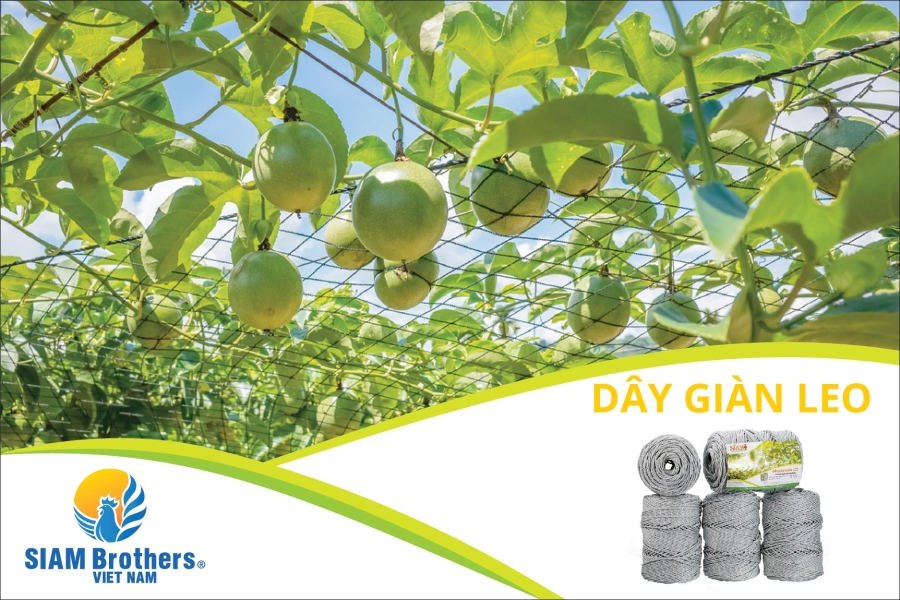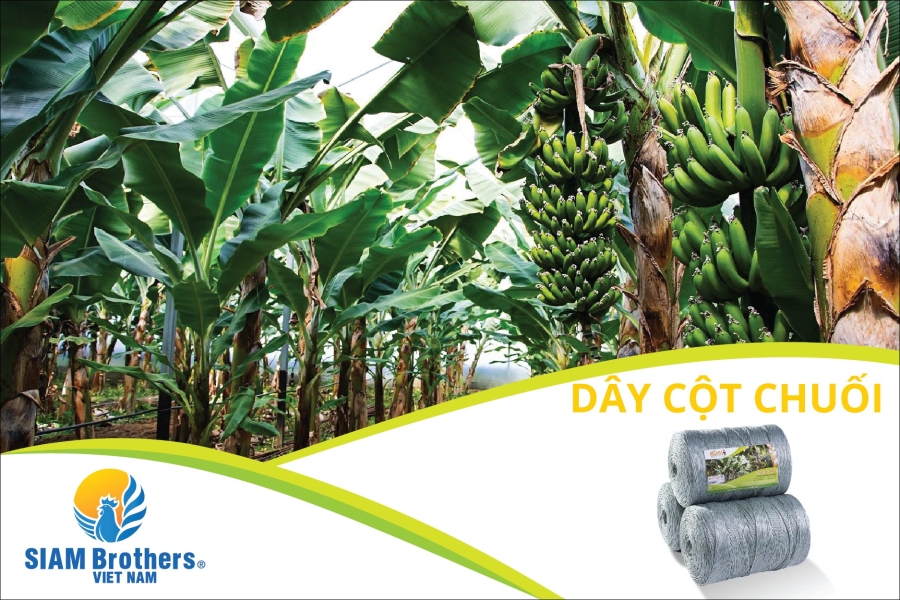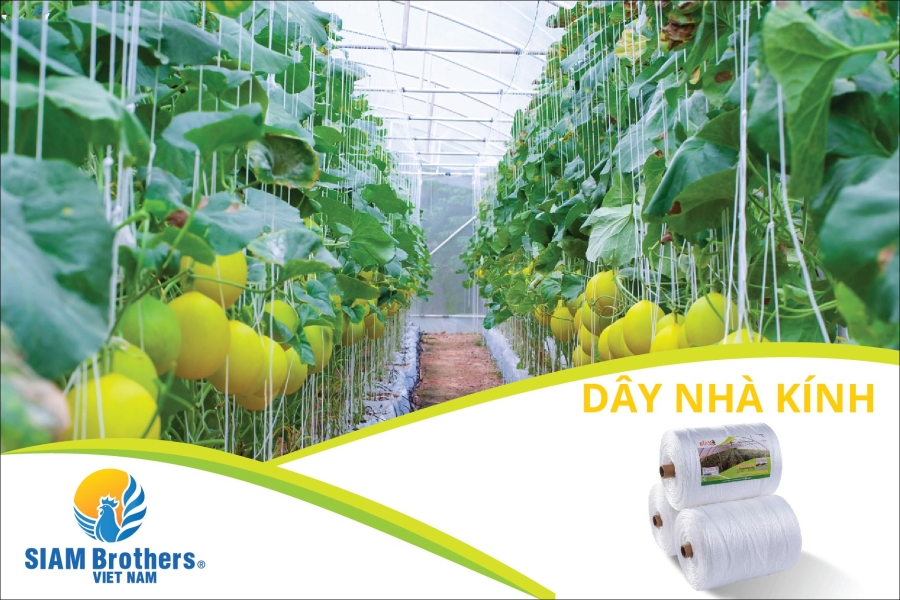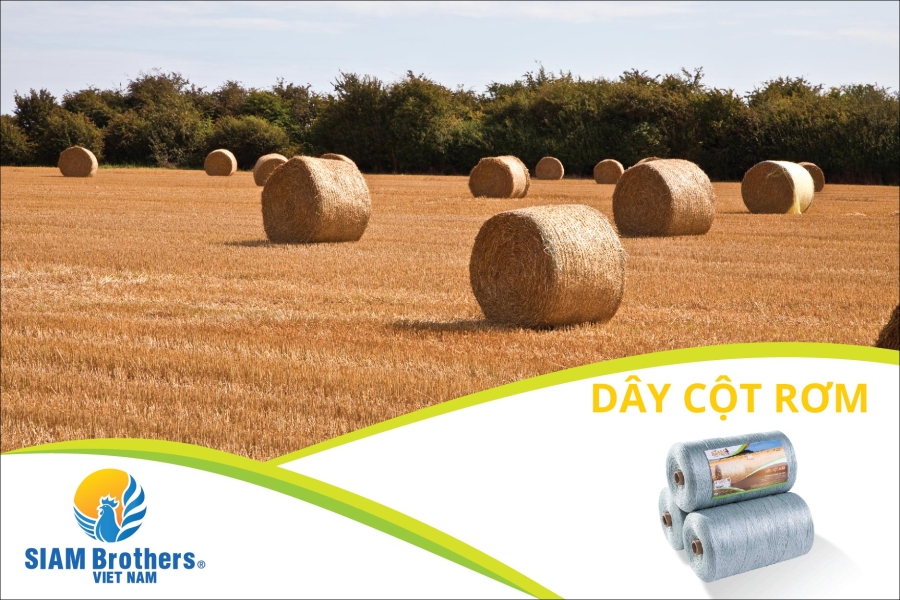Ropes are a product applied in various areas of life to serve the increasingly diverse needs of humans. Ropes are used in agricultural cultivation to enhance work efficiency and provide additional support for crops. Below is some application of ropes in agricultural cultivation:
Details
Ropes are a useful tool for creating trellises for various climbing plants in agriculture, such as tomatoes, Dutch beans, Cô Ve beans, cucumbers, passion fruits, and winter melons. Begin by constructing a sturdy frame for the trellis using materials such as wood or iron. Subsequently, use specialized agricultural ropes to tie onto the frame, forming a network that allows the climbing plants to grow on it. The characteristic of these trellising ropes is that they have to be thin yet robust, with a high tensile strength to withstand the weight of certain types of climbing plants with larger fruits, such as melons, winter melons, and bottle gourds.
Farmers in need of trellising ropes for various climbing plants can contact Siam Brothers Vietnam directly for advice on choosing a suitable type that aligns with their cultivation needs while being cost-effective. Alternatively, they can visit "AGRICULTURAL ROPE" to explore the product range.

Pic1: The application of ropes as trellises for various climbing plants
Vietnam, with its tropical monsoon climate, is suitable for cultivating various fruit-bearing crops such as durian, bananas, oranges, lychees, and jackfruits. Additionally, the country frequently faces significant agricultural losses due to annual natural disasters, adversely affecting farming activities. The use of ropes as support poles to prevent toppling helps protect the yields of farmers from the adverse effects of harsh weather conditions. Starting by using specialized ropes for securing plants against falling, you can refer to the products here. Subsequently, tie the rope directly to the plant stem, then pull it taut and securely fasten it to the ground using a stake. Ensure that the other end of the rope is tied to the stake. Farmers may reinforce the setup in different ways to ensure that the rope is taut and securely holds the plant upright, preventing it from falling during strong winds, heavy rains, or flooding.

The application of ropes as support poles to prevent the falling of crops such as durian, rubber, banana, orange, lychee, and grapefruit...
The greenhouse farming system is no longer unfamiliar in Vietnam. The country has been widely adopting greenhouse agriculture due to the numerous significant benefits this cultivation model offers. When using ropes as part of the greenhouse system, it is crucial to ensure a reasonable setup, providing sturdy support for optimal plant growth while maintaining cost-effectiveness. The considerations for cultivating a greenhouse agricultural model using ropes are similar to those for using ropes as trellises for climbing plants. Ropes utilized in greenhouse systems can serve as trellises for certain climbing plants, be used in hydroponic or aquaponic systems, reinforce the mesh structure of the greenhouse, and more. You can explore greenhouse rope products or other agricultural rope products at "AGRICULTURAL ROPE".

The application of ropes as a greenhouse system
Vietnam is a country with a significant water rice agriculture sector, resulting in large amounts of straw being left in the fields after each rice harvest. Previously, in many regions, farmers used to discard straw, but nowadays, straw has gained considerable value through applications such as mushroom cultivation and livestock feed for animals like buffaloes, cows, horses, goats, etc. Additionally, straw is utilized in composting to produce fertilizer. Consequently, straw has become more valuable, and farmers now pay more attention to harvesting straw after the rice harvest. Ropes are employed as straw baling twine and straw support poles. Starting with the use of straw harvesting machines, these machines bundle straw into large rolls. Subsequently, ropes are tightly tied around these rolls to facilitate easy transportation. The characteristics of ropes used as straw baling twine include small, durable fibers – avoiding the use of elastic fibers, high tensile strength, compact rolls, and easy installation on straw baling machines. Farmers interested in exploring rope products for straw baling twine can refer to "AGRICULTURAL ROPE".

The application of ropes as straw or hay baling twine
Furthermore, ropes have various other applications in agricultural cultivation, such as reinforcing livestock pens, tying fences, securing irrigation systems, and hanging poultry feeders. Depending on specific usage needs, ropes can have different applications in agricultural practices. It is essential to ensure proper and appropriate use to achieve the highest work efficiency.